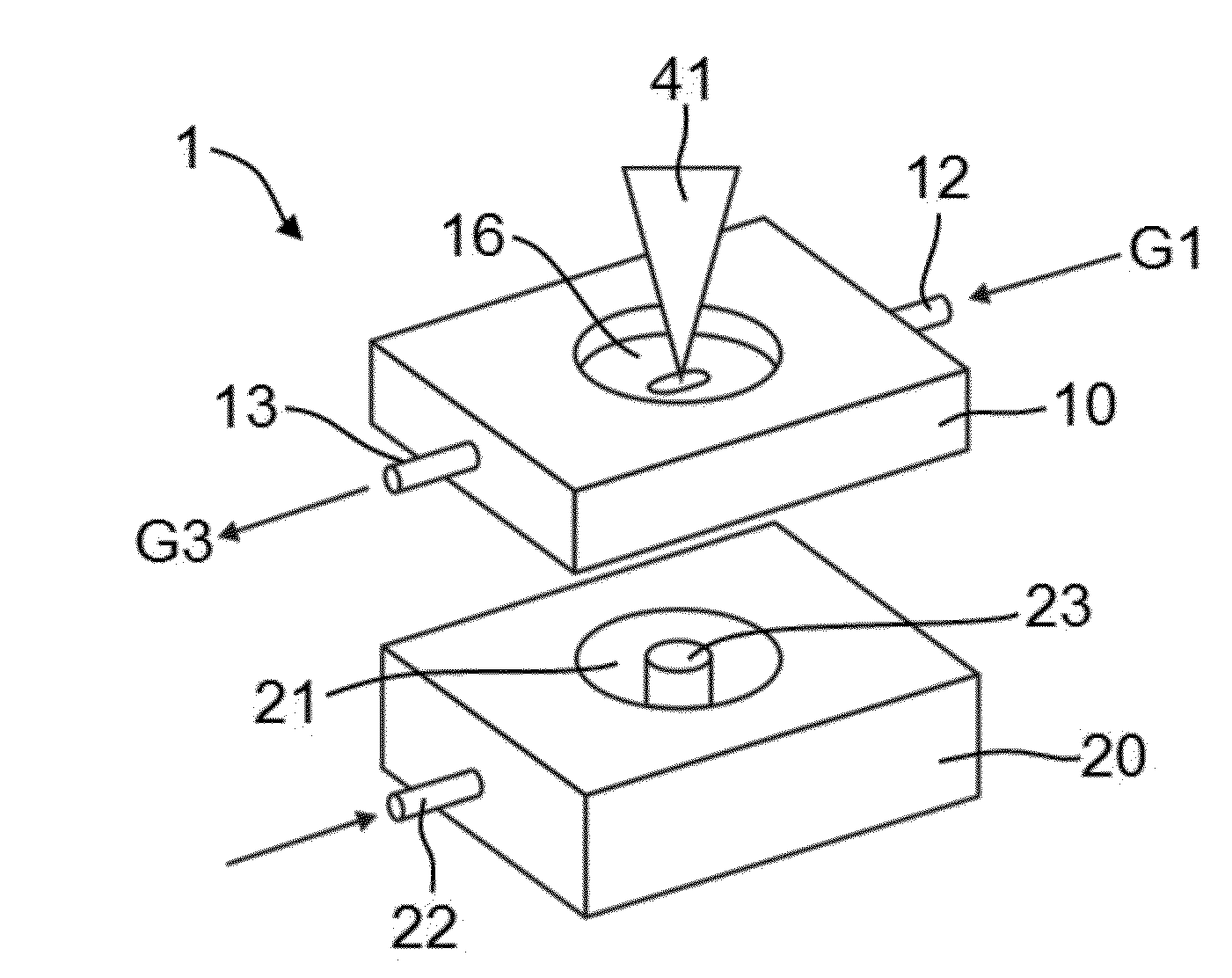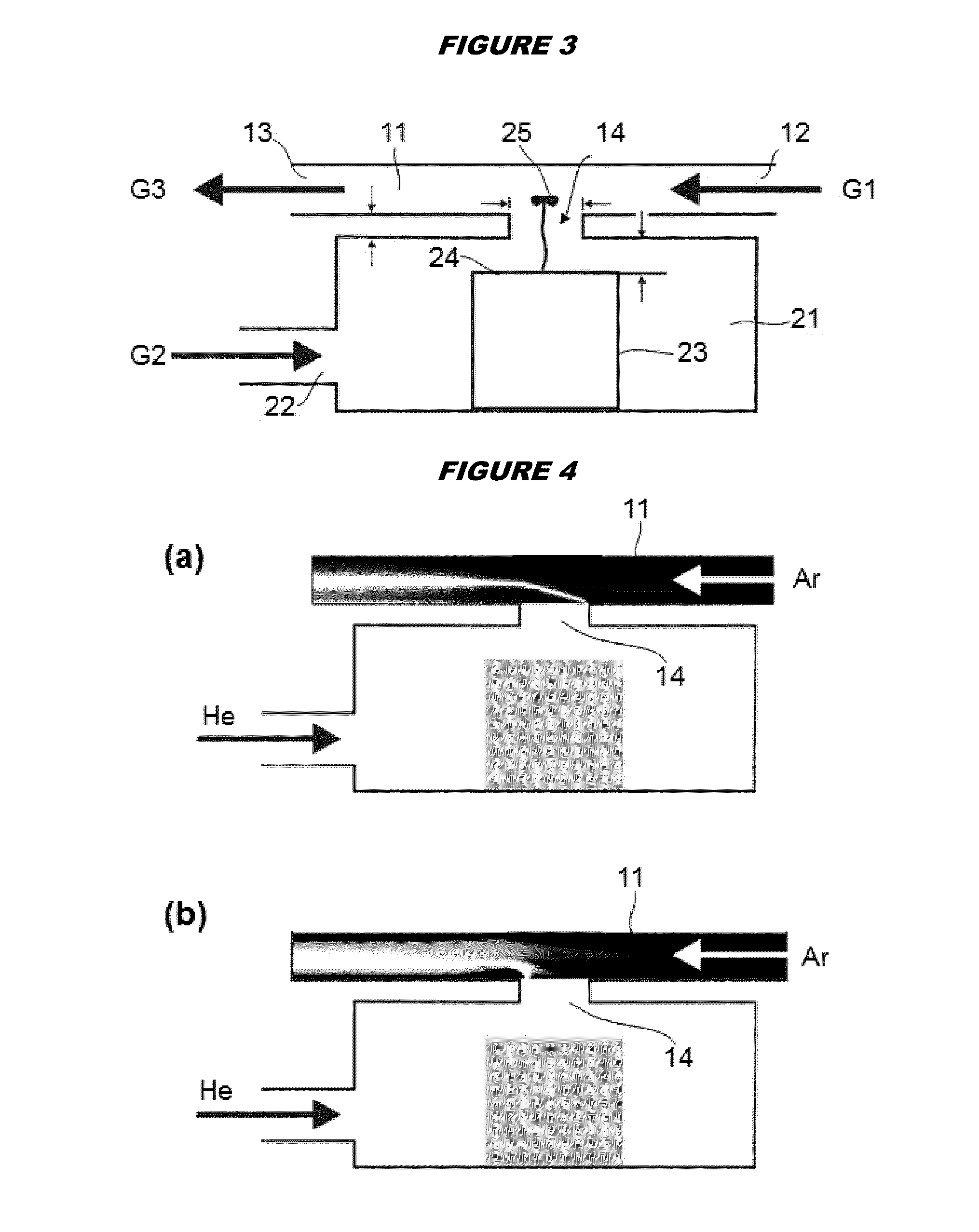Laser ablation cell
a laser ablation cell and laser ablation technology, applied in the field of laser ablation cells, can solve the problems of increasing the total scan time, lack of resolution necessary for imaging single cells within tissue samples, and often key limiting factors of aerosol washout time, and achieve the effect of short aerosol washout tim
- Summary
- Abstract
- Description
- Claims
- Application Information
AI Technical Summary
Benefits of technology
Problems solved by technology
Method used
Image
Examples
examples
i. Experimental
[0144]Manufacture of Laser Ablation Cell
[0145]A cell top 10 was manufactured from a rectangular cuboid of acrylic glass (poly(methyl methacrylate), PMMA). A longitudinal hole of 3 mm inner diameter was drilled through the cuboid along the long axis, forming the flow channel 11. In the top wall portion 17 of the cell top 10, a transversal, slightly elliptically shaped hole with length L=4.5 mm and a width of 1.5 mm was formed and was closed by an UV transparent silica window 16. A lateral opening 14 of similar dimensions as the hole on the top side was formed in the bottom wall portion 15 of the cell top 10. The bottom wall portion 15 was then machined to reduce the minimum thickness w of the bottom wall portion in the region of the flow channel 11 to approximately 50 micrometers. The total length of the flow channel 11 was about 50 mm.
[0146]A cell bottom 10 was manufactured from another PMMA cuboid. A cylindrical sample chamber 21 having a diameter of approximately 23...
PUM
| Property | Measurement | Unit |
|---|---|---|
| Time | aaaaa | aaaaa |
| Time | aaaaa | aaaaa |
| Length | aaaaa | aaaaa |
Abstract
Description
Claims
Application Information
 Login to View More
Login to View More - R&D
- Intellectual Property
- Life Sciences
- Materials
- Tech Scout
- Unparalleled Data Quality
- Higher Quality Content
- 60% Fewer Hallucinations
Browse by: Latest US Patents, China's latest patents, Technical Efficacy Thesaurus, Application Domain, Technology Topic, Popular Technical Reports.
© 2025 PatSnap. All rights reserved.Legal|Privacy policy|Modern Slavery Act Transparency Statement|Sitemap|About US| Contact US: help@patsnap.com



